10 types of Low Risk Investments in 2024
By Wilbert S
January 10, 2024 • Fact checked by Dumb Little Man

The #1 Forex Trading Course is Asia Forex Mentor
Investment and risk are two notions that go hand in hand. Whenever any investments are made there surely will be some kind of risk involved. Investors are always looking for ways to avoid or minimize those riskier investments. However, this is not an easy task because risk itself is an abstract term that is difficult to define or measure.,
When it comes to the forex market, the risk is measured by the market value volatility. However, even when it makes sense, the market fluctuation does not necessarily conclude that it will be risky or unfavorable for the investors. So volatility should not be the only criteria for calculating the risk of the investment. Instead, investors should analyze risk with the probability and likelihood of the underlying asset underperforming or losing substantial value in the market.
Since the risk mentioned above analysis is not everyone’s cup of tea, most inexperienced investors struggle to deal with the risks involved in their investments and suffer losses. Hence, this review aims to better guide the investors in understanding the potential dangers within assets and how they can build a portfolio according to the best low-risk investments in the forex market.
Low Risks Investments: What is Low Risks Investment
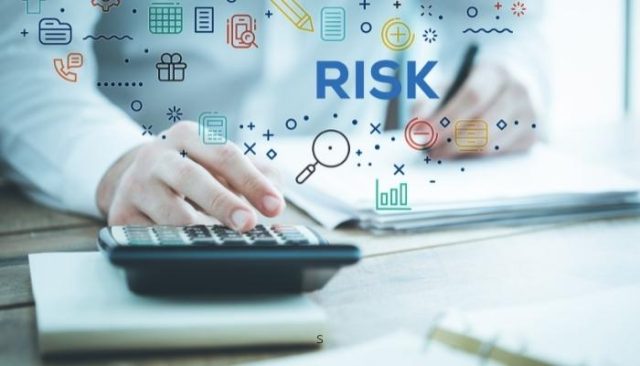
Low-risk investment can simply be defined as “playing safe”. This means investing in assets with minimal possibility or probability of losses. Moreover, when it comes to low-risk investments, it is not just about the quantity of the invested money. It is also about the importance or quality of the investment in the investor’s overall portfolio.
As the probability of potential losses in the low-risk investments is less, the profit margin in such investments is even further down than the losses. Therefore, if a trader seeks to invest in low-risk investments to be safe from massive risks, they should also be ready to earn only minimal benefits or returns. The reason is that only high-risk investments can either result in maximum potential loss or maximum potential gains.
Additionally, Low-risk investments are appreciated more by new and skeptical investors because it not only ensures that the risks will be low but also guarantees that there will be no devastating damages. This condition makes low-risk investments highly popular among most investors. However, there are always those game-players looking to earn big would not appreciate such investments. Hence they would opt for high-risk investments.
All in all, investors are required to view risks in multiple layers. Risk is not a clear-cut answer to an asset’s under or above performance expectations. However, the generalization that any particular asset has a low risk and would always have a low risk is dangerous. Similarly, time zone and short and long-term investment goals are also other aspects that should be kept in mind while choosing any low-risk investment.
10 Best Low-Risk Investments this 2024
#1. High-Yield Savings Accounts
#2. Series I Savings Bonds
#3. Fixed Annuities
#4. Money Market Accounts
#5. Preferred Stocks
#6. Dividend-Paying Stocks
#7. Corporate Bonds
#8. Treasury Bills, Notes, Bonds, and TIPS
#9. Money Market Funds
#10. Short-Term Certificates of Deposit
Analysis: 10 Best Low-Risk Investments this 2024
#1. High-Yield Savings Accounts

As the name suggests, a high-yield saving account is one kind of savings account that offers higher interest rates than the usual national average rate of a standard saving account. This variation of savings accounts with higher interest rates provides protection and security of investments through insurance though it offers lesser returns than the other risker options.
Banks introduced High-yield savings accounts with the convenience of e-banking as it is much easier to open these accounts other than the ones where customers hold their current accounts. As a result, the competition within the banks is rigorous, leading to luring customers through benefits and added returns on saving funds. Hence, multiple online banks offer these accounts to attract more customers by offering higher returns than traditional saving accounts.
How it works:
If an individual wants to open a high-yield saving account at their current bank, then opening an account would hardly take any time since all the required information would already be available to the bank from their checking account. However, If someone wants to open a high-yield savings account in another bank, then the procedure might require some time to verify the information. In any case, opening a high-yield savings account is a simple and hassle-free process.
A high-yield savings account may look like an easy, low-risk option; however, to get its maximum benefit, it is essential to keep some points in mind to compare and choose the best option. For instance, the required initial deposits, minimum balance, access and withdrawals, additional charges or fees, sync with banks and brokerage services, etc., are all crucial aspects for selecting the best low-risk investment.
Pros
- Higher interest rates
- Protection of insurance
- Electronic transfers between banks
- Easy account set-up
Cons
- Limited features
- Lesser yield than other high-risk investments
#2. Series I Saving Bonds

Series I saving bonds are another low-risk investment option. These bonds are interest-bearing saving bonds that cannot be bought or sold in markets other than the officially issued by the government of the United States. These bonds provide fixed returns to the investors and are also adjusted according to the inflation rate. Moreover, Series I saving bonds are effective for 20 years and can be expanded to another ten years.
The best part about these bonds is that they provide federal security for investors, making them the least risky compared to other investments. Additionally, the aspect of inflation adjustment gives these bonds an added value to other bonds. In contrast, Series I saving bonds do not offer high returns or profits compared to corporate and municipal bonds; however, it comes with the protection of loss of value.
How it works:
Investors can buy the Series I saving bonds only from the United States treasury securities. The minimum purchase of these bonds is $25 while the maximum purchasing power is $10,000. The interest rates on these bonds are calculated with the fixed annuity plus the inflation rate, which makes the composite rate of these bonds. If the inflation rate fluctuates so low that it declines from the fixed rate, the bank will reset the combined rate to zero from negative.
The actual interest rate of the Series I saving bonds remains fixed throughout the life of the bonds; however, the inflation rate is adjusted twice a year, keeping in view the economy’s inflation rate. Therefore, even when the inflation rate adds value to these bonds, it always makes the value of these bonds unpredictable for the future years to come. Nonetheless, Series I saving bonds are a better low-risk investment option than other bonds.
Pros
- Fixed annuity plus the inflation rate
- Federally secured investment
- Inflation adjustment twice a year
- Long-term safe investment
Cons
- Purchase limits
- No secondary markets
#3. Fixed Annuities
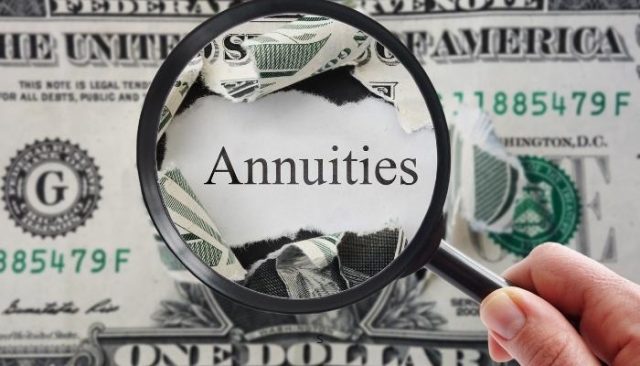
Fixed Annuities are like any other insurance agreement where the buyer is offered a fixed interest rate on their investment in the company. These annuities are more commonly used as retirement plans. Even when the term ‘fixed’ refers to a rigid amount of interest rate risk, it is very much possible to change the interest rates after a certain amount of time which the interest rate would mention in the initial contract made between the insurance company and the customer.
Since these annuities offer a predictable amount of income to the investors, it is considered a very safe investment option. Moreover, the market’s volatility, for an extended period, does not affect the fixed annuity-like other investment options. As a result, investors who want certainty and peace of mind in their investment consider it a valuable and risk-free asset.
How it works:
Investors can buy fixed annuities by making a small initial investment or paying installments known as premiums. The company, in return, ensures a fixed interest on the investment, and an agreement is made between the two parties. After the payment is deposited, the payout process starts, and a fixed interest is paid to the owner for an agreed period or a lifetime.
During the accumulation of payments, the account of the owner is tax-free. This gives their account an added value, especially if they come under high tax brackets. However, when the account holder annuities the agreement, deducting the premiums, all the interest return is calculated for a certain percentage of payable taxes. Moreover, the owners can only make one withdrawal per year, which is also up to 10% of the total investment in the account.
Pros
- Guaranteed income
- Secured investment
- Investment grows tax-deferred
- Promising retirement plan
Cons
- One withdrawal per year
- High-fees
#4. Money Market Accounts

Money-market accounts are very much different than the other typical bank accounts. It does offer high-interest rates like high yield accounts. However, certain restrictions make it less flexible than the other accounts. Money market accounts and high yield accounts are very similar. However, the former is a more flexible account in terms of withdrawal and minimum balance, whereas the latter offers a higher interest rate.
The financial institution FDIC also secured and protected these accounts, making them more credible as a low-risk investment. Moreover, many other privileges are offered through these accounts that are not available in high yield accounts, such as debit cards, credit cards, check writing, and insurance protection. In contrast, these accounts have certain restrictions on withdrawals and limitations on transactions, making them not a good choice as an emergency fund like other bank accounts.
How it works:
These accounts are easily accessible as investors could open them through online or traditional banking and credit unions. However, these accounts require a minimum deposit when opening an account in the bank and the credit union and charge a penalty if the account does not hold the minimum required balance.
Moreover, these accounts are insured by the federal deposit insurance corporation (FDIC), an insurance agency approved by the federal government. The FDIC covers such accounts with a deposit of 250 000$ per bank. If an investor opens a money market account in the same bank as their current account, the total will count for the 250 000$ limit. The investor can open accounts in two different banks if they want to exceed the deposit limit.
Pros
- FDIC protection
- Fixed interest rates
- Includes Debit cards
- Includes check-writing
Cons
- Requisition of minimum balance
- Limited withdrawals
#5. Preferred Stocks
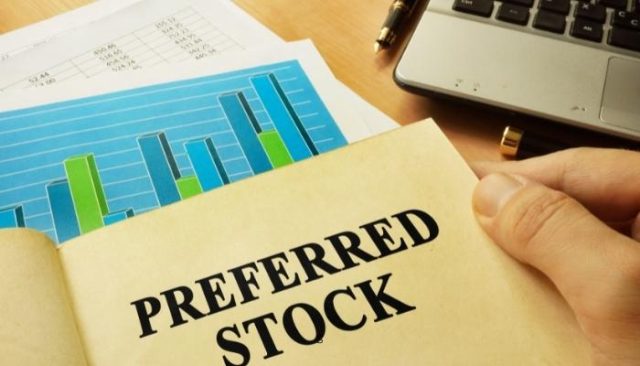
Buying or owning stocks means having a share or equity within a company. There are two types of stocks, common stock and preferred stock. Preferred stockholders have the advantage of getting more dividend payments than common stockholders. As a result, investors usually choose preferred stocks because they benefit from receiving fixed dividend payments and simultaneously have the potential for appreciation of prices predicted from past performance.
In a way, preferred stock is the combination of common stocks and bonds because the investors receive fixed dividend payments like bonds and enjoy ownership within a company like common stocks. But, conversely, preferred stock does not share the same advantage as bonds treated as debt. As a result, if the invested company loses money, the company has the right to lower the dividend payments.
How it works:
Preferred stock, unlike common stock, is usually available in various forms and can be easily bought through online stockbrokers by any investor. However, it is mainly observed that companies and firms usually buy these stocks more than individual investors because they buy the stocks in bulk, and the companies get many tax benefits. Nonetheless, it is equally profitable for both individual and company investors.
The maturity date of these stocks is more often distant or lifetime. As a result, these stocks serve as a promising fixed income for investors seeking low-risk investments. Contrary to this, it is also a truth that the preferred stock investors do not have the right to vote on the rules and regulations for the appreciation of dividends set by the company. If the company faces losses or gets bankrupt, the investor does get a share of the company’s assets.
Pros
- High dividend payments
- Higher assets in liquidation
- Potential price appreciation
- Callable feature
Cons
- Subordinate to bondholders
- No right to vote
#6. Dividend-Paying Stocks
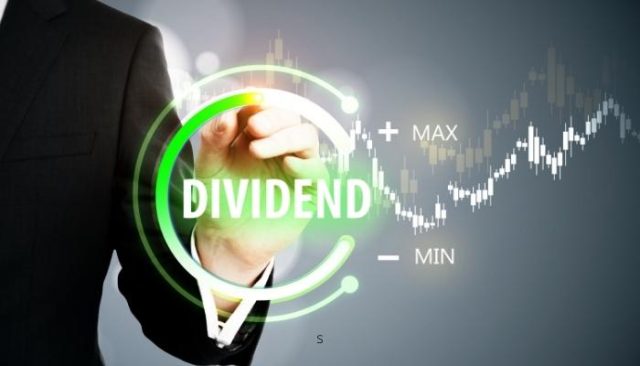
Dividends are the payments paid to the shareholders from a company’s earnings. However, the payment percentage and the schedule of fees are determined by the company’s board of directors. Commonly the shareholders get the dividend payments as long as they hold or own the stocks, and there is no fixed expiration or maturity date for these dividend-paying stocks.
Usually, companies that are more established in the equity markets or have businesses on a large scale prefer paying dividends to the shareholders. These companies do so to encourage more investors to invest in their companies. However, those companies or businesses that are start-ups or are in the mid-way of their business setup usually do not offer dividends because they are looking for more expansion and profits investments within their companies.
How it works:
Investors looking to choose the best dividend-paying stocks in the stock market need to gauge the dividend payment performance of the companies. The dividend payment performance could be measured in multiple ways, like the dividend yield factor, which measures the percentage of the market share price, the dollar value of each share, or the DPS dividend per share.
Buying dividend-paying stocks rather than common stocks can be looked at as the best low-risk investment because the investor gets the assurance that the company is doing good business to share its profit with its shareholders but also benefits from a recurring income. Moreover, many dividend-paying stocks are also low taxed so that the investor may enjoy a value-added investment. However, investors should also keep in mind that when these stocks are sold, the tax payable on the profits is relatively high as well.
Pros
- Recurring revenue
- Value stocks
- Tax advantages
- Dividend yields cover inflation losses
Cons
- Not a stable income
- Limited potential for higher returns
#7. Corporate Bonds

A corporate bond is like an agreement between a company and an investor to pay a fixed interest rate on the capital invested in the company. These bonds are debt security that is paid for an agreed period, and when it reaches an expiry date, the interest payments cease. The original invested capital is returned to the investor.
In the investment regime, corporate bonds are considered a safe and secured investment because, in case of the downfall of a company, it is most liable to pay back the holders of the bond first. Similarly, it is observed that these bonds serve as a reliable retirement plan for older people who want to invest money in bonds to earn an additional income.
How it works:
Before being issued, the corporate bonds are rated by three U.S rating agencies to ensure their security and credibility. The highest-rated bonds by these agencies are known as the Triple-A” rated bonds, and the lowest are referred to as High-yield bonds or junk bonds. These ratings are essential to consider for any investor looking to invest in low-risk investment bonds.
While buying corporate bonds, investors should also keep in mind that even the highest-rated secure corporate bonds are more protected and reliable than U.S government bonds. Nevertheless, the risk also comes with the benefit of higher interest rates. Hence, by following productive investment advice and proper homework, an investor can receive significant returns by investing smartly in corporate bonds.
Pros
- Regular cash payments
- Access to the secondary market
- Higher interest rates
- Less volatility
Cons
- Affected by interest rates
- No leverage for higher returns
#8. Treasury Notes, Bills, Bonds, and TIPS
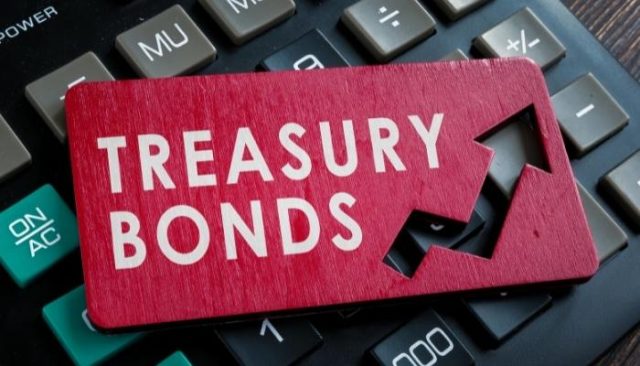
In the world of low-risk investments, Treasury Notes, Bills, Bonds, and Tips are considered the safest investment as they are issued and backed by the U.S department of treasury. The Treasury notes, bills, bonds, and TIPS are all similar; however, their expiry date differentiates them.
Treasury bills are issued only for a year or less short duration. In comparison, Treasury notes are issued for two, three, five, seven, or ten years. In contrast, Treasury bonds are issued for a longer span of thirty years. Finally, the Treasury-Inflation Protected Securities (TIPS) are given for five, ten, and thirty years. The TIPS have the same features as government bonds. However, they are added in value according to the inflation rates.
How it works:
The treasury, notes, bills, bonds, and TIPS are issued by the treasury securities and are auctioned for sale. The rate for interest returns on these assets is fixed; however, the price of buying these assets through bids depends upon the supply and demand of these assets. Hence, when the demand is high, bidders pay more to buy them, and when the demand is low, investors may sell them at a lower price.
The treasury department pays interest on bills only when they expire or mature. The notes, bonds, and TIPS investments are paid a fixed interest return every six months. The advantage of these investments other than the security is that the investors will receive the face value price of the asset regardless of the price paid while buying. Moreover, the minimum investment requirement for these assets is 100$, which is reachable for every range of investors.
Pros
- Secured government-issued assets
- Predictable returns
- Tax-deferred
- Easy to buy and sell
Cons
- Low returns
- Dependent on interest rates
#9. Money Market Funds

Money market funds are more like mutual funds, including investments in high liquidity securities. These securities include treasury notes, certificates of deposits (CDs), commercial paper, repurchase agreements, and bankers’ acceptances which make up the pool of money collected from mutual funds investors. These funds are managed by the fund managers who seek to earn profits through different investments and are distributed among the mutual fund shareholders.
Even when money market funds are considered safe, low-risk investments, these funds still have a deficient level of risk involved as any federal agency does not insure them. Moreover, it is statistically observed that money mutual funds offer minimal returns and capital appreciation. Nevertheless, investment in these funds does promise a risk-free return.
How it works:
Retail investors or investment companies generally use these funds to store capital in a safe place for a short period. These funds are bought at a price called their net asset value (NAV). The NAV is not prone to fluctuations and is fixed at the end of each day. The most significant advantage of this fund is its high liquidity. An investor can get an expected cash return whenever needed by selling the funds.
Investors could easily buy the money market funds through mutual funds advisory or brokerage services. It is also beneficial for small and large scale investors, with minimum investment ranging from 500$ to 5000$. Furthermore, the withdrawal process is straightforward without any complications for the investors. These features make these funds secure cash storage for a short period.
Pros
- Minimal risk involved
- Better returns than bank accounts
- High-liquidity
- Safe storage for cash
Cons
- Not insured by federal agencies
- Low capital appreciation
#10. Short-Term Certificates of Deposit CDS
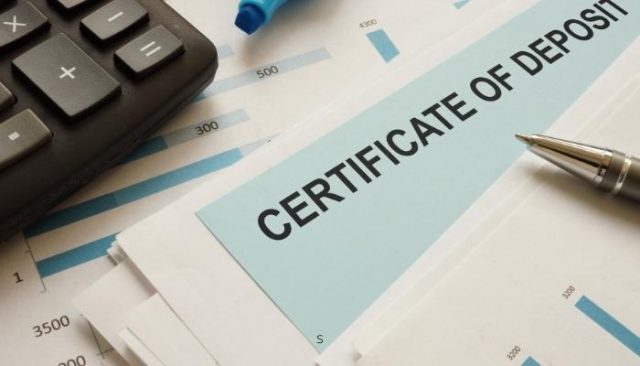
As the name suggests, short-term CDs are one kind of security that banks and credit unions give to the investors for depositing capital for a predetermined time. However, the capital investor would not be available to withdraw money until the determined period, and early withdrawal would result in penalties. However, some banks and credit unions do offer emergency withdrawal options.
One benefit for the investors to invest their capital in CDs is to receive premiums based on interests. Secondly, almost all financial institutions offer CDs, resulting in a lot of competition. Finally, as a result, top-paying certificates provide five times higher returns than the national interest rate. Nonetheless, it is also a truth that there is a low opportunity for capital growth.
How it works:
Like opening a bank account, CDs are also very easy to buy. However, there are specific terms and conditions that the investor has to agree to before purchasing a CD. The first condition is the interest rates, which the bank fixes at the time of the purchase. The second condition is the time for which the investor agrees to keep their capital deposited until the CD expires. Finally, the third is the minimum amount that the investor decides to deposit.
Similarly, the bank or credit union also decides the rate of penalties and terms of withdrawals and compound interest payments. Moreover, CDs are secured by federal insurance, which makes them a safe investment. But, adversely, since the price of the interest rates is fixed initially, it is possible to get lower returns due to the fluctuating inflation rate.
Pros
- Safest investment
- Predictable return
- Federally insured
- Highly competitive
Cons
- Return not in accordance to inflation-rate
- Limited liquidity
| RECOMMENDED TRADING COURSE | REVIEW | VISIT |
|---|---|---|
 | #1 Forex, Crypto and Stocks trading course. Ranked most comprehensive by Investopedia and Best by Benzinga. Free to Try! |  |
Featured Investing Broker of 2024
| Broker | Best For | More Details |
|---|---|---|
 | Advanced Non US Traders Read Review | securely through Avatrade website |
 | Intermediate Non-US Traders Read Review | securely through FXCC website |
Overall Broker | securely through Forex.com website | |
 | Professional Forex Traders Read Review | securely through Interactive Brokers website |
| Broker | Best For | More Details |
|---|---|---|
 | Advanced Traders Read Review | securely through Tradestation website |
 | Intuitive Platforms Read Review | securely through Tradier website |
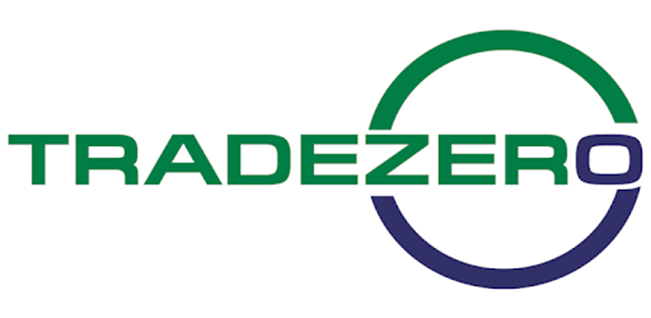 | Powerful Services at a Low Cost | securely through Tradezero website |
 | Professional Forex Traders Read Review | securely through Interactive Brokers website |
Best Forex Training Course

Trading forex is quite popular these days and it is wrongly assumed that it is a cup of everyone’s tea. However, it is also an inevitable fact that a big number of investors and traders cannot make significant profits when it comes to forex trading. Therefore, it is important to understand that successful trading is a skill that requires training from experts.
There are few credible forex training forums amongst which Asia Forex Mentor is the best. Through this amazing course, traders do not just make some profit, on the contrary, the pro-traders make massive profits making 6 figures per trade every time.
The logical power of mathematical probability makes it possible to get such high returns. But this strategy is not something that is learned easily. Such proven strategies require experience and training which is what the trainers of One Core Program possess. This program revolves around financial experts equipped with research-based trading strategies leading to unbelievably successful results.
One core program offered by the Asia Forex Mentor is the ultimate course which is an all-inclusive course including multiple trading solutions with expert advice. Additionally, the tweaks and customized expert solutions cater to the needs of every individual client.
| RECOMMENDED TRADING COURSE | REVIEW | VISIT |
|---|---|---|
 | #1 Forex, Crypto and Stocks trading course. Ranked most comprehensive by Investopedia and Best by Benzinga. Free to Try! |  |
Conclusion: Low Risks Investments

It is a well-known fact that every investment involves some level of risk. Therefore, even the most relatively safe assets can be prone to unpredictable threats. In this scenario, investors do not require looking for risk-free investments. Instead, investors need to learn which investment opportunities have high-risk and low-risk options to make an informed investment decision.
There are numerous other low-risk investments for investors to create a diversified portfolio. However, each investment opportunity comes with liability. For instance, some low-risk investment options like Treasury notes or government bonds offer protected and secured investment; however, the returns for these instruments are lower than other options like a High-yield savings account.
Furthermore, Low-risk investments are not only beneficial because they save the investors from the potential risks of losses. What is more important is that low-risk investments protect the investors by ensuring that even if there is some risk involved, it is not devastating or highly damaging for the traders.
To conclude, it is crucial for investors, both new and seasoned, to understand the very notion of financial planning. Low-risk investments may seem like an intelligent move toward investment. However, there are always chances of many unknown risks involved for which an investor should be ready. Nonetheless, a well-informed and well-prepared investor would always benefit from low-risk investments.
Low Risks Investments FAQs
What Investments have the lowest risk?
There are opinions expressed that even the lowest risk investment involves risk. There are always unknown and unpredictable risks present to lose money. With that being said, it is a truth that any kind of investment that is secured by the government debt or is insured by any federal insurance agency is considered to be the lowest risk investment.
Investing in asset with guaranteed interest rate such as the U.S treasury bonds or “triple-A” bonds are known to be the safest investment advice for investors because there has never been a case of default risk with these bonds. However, along with being the lowest risk investment, it is also the investment with the least returns.
Other than triple-A bonds any instruments with treasury securities or FDIC insured such as notes, bills, CDs, fixed annuities, etc. are all examples of moderate-risk investments option.
What makes a low-risk investment?
To make any investment low-risk investors need to take measures before investing in any assets. Therefore, any investment which is either protected by the U.S government treasury or has a guarantee of FDIC is always considered to be a safe and low-risk investment. These investments are less risky because there are fewer chances to lose money due to market volatility and even if there are any losses there are bearable by the investor.
All in all, we can say that if any investment does not give us the same return as expected or results in a loss of invested capital that would be considered a risky investment. And the amount of the capital return and loss of the capital invested makes the investment either low in risk or high in risk.
What is a good low-risk stock to invest in?
Dividend-paying stocks or preferred stocks are the best options for investing in a low-risk stock. Even when these stocks are not protected by the FDIC, these stocks are reliable compared to others in the stock market. The reason is the fact that only financially stable companies have the capacity to pay dividends to their shareholders. That is why only reputable companies offer high-yield dividend-paying stocks.
Wilbert S
Wilbert is an avid researcher and is deeply passionate about finance and health. When he's not working, he writes research and review articles by doing a thorough analysis on the products based on personal experience, user reviews and feedbacks from forums, quora, reddit, trustpilot amongst others.

